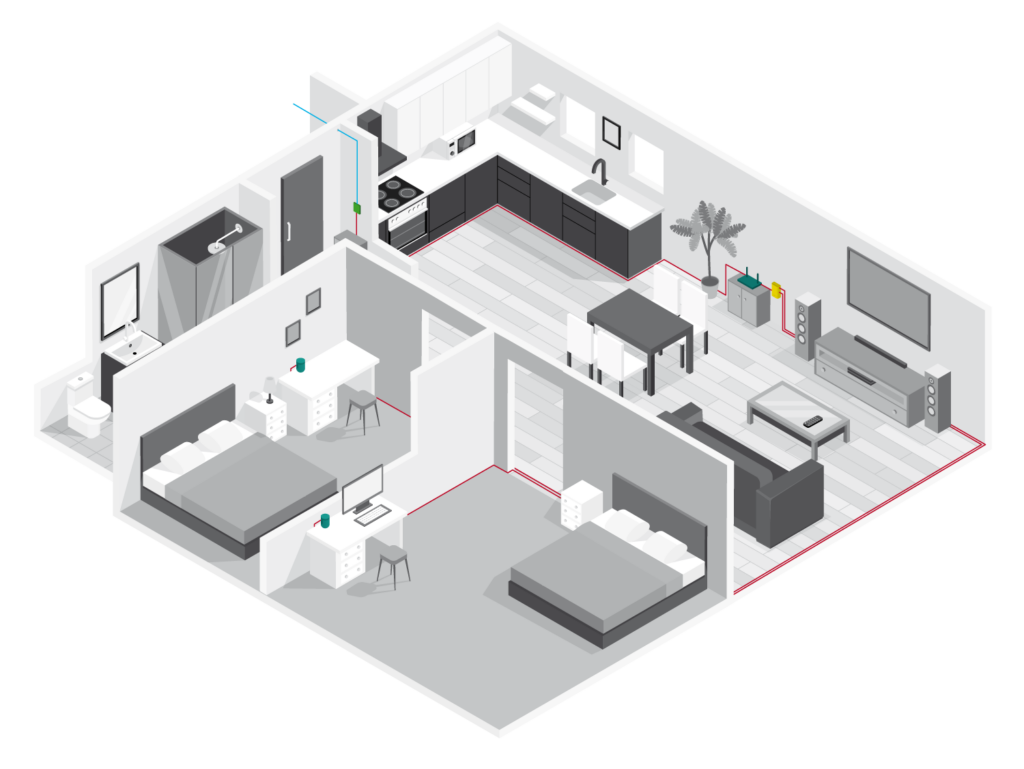Fiber-To-The-Room (FTTR)
Value of fiberization
Fiber optic technology offers distinct advantages over traditional copper wiring in terms of network evolution, sustainability, and overall performance. While copper networks often face bandwidth limitations requiring upgrades every five to ten years, fiber optic networks boast a long lifespan and can be deployed once without the need for re-cabling for up to three decades. Not only does fiber offer superior bandwidth capabilities, but it also consumes less energy, aligning closely with objectives for sustainable, green development.
In today’s digital age, the role of fiber optics in both fixed and mobile networks is pivotal. Metrics like fiber-to-home and fiber-to-enterprise are key to assessing network growth. As we approach the next decade, advances in optical networks will drive the shift to Fiber-To-The-Room (FTTR) systems, meeting the increasing data demands with a fully fiber-optic architecture.
What FTTR makes a difference
FTTR networks require specialized communication protocols between master and slave gateways, offering visualization benefits for both carriers and end-users. Carriers can use data analysis to troubleshoot remotely, minimizing onsite visits and O&M costs. They can also target AI-based service packages to specific users. End-users gain control over their home network’s status and settings via an app, enhancing service experience. While reducing initial procurement costs is important, long-term O&M costs should not be overlooked for the sake of network performance and user satisfaction.
FOTUX’s focus on all-fiber deployment
FOTUX remains committed to enhancing the efficacy and reach of its all-fiber solutions in the network infrastructure space. Instead of diluting our focus, we have concentrated on quality control, aiming for practical and tangible improvements. Our team is engaged in ongoing optimization processes, focusing on the durability, efficiency, and cost-effectiveness of our fiber-optic products as well. With these considerations in mind, we continue to follow the evolving demands of both carriers and end-users, emphasizing not only high performance but also long-term operational sustainability.



